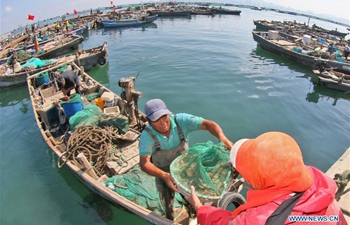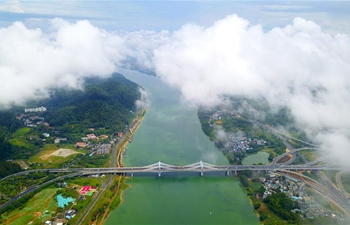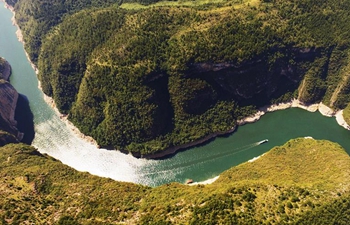SAN FRANCISCO, Sept. 2 (Xinhua) -- Engineers of U.S. University of California at Berkeley (UC Berkeley) are working on a new way to purify storm water with engineered sand to secure safe, clean water for water-stressed communities.
The UC Berkeley engineers have developed a technology that can remove contaminants from storm water by using a low-cost mineral-coated sand that reacts with and destroys organic pollutants in the water.
Their study was published in the August edition of the journal Environmental Science & Technology.
The U.S. scientists mixed plain sand with two forms of manganese that react to form manganese oxide to create the coated sand.
The harmless mineral, manganese oxide, binds to organic chemicals such as herbicides, pesticides, and the endocrine-disrupting bisphenol-A (BPA), and breaks them down into smaller pieces that are usually less toxic and more biodegradable..
"Manganese oxides are something that soil scientists identified 30 or 40 years ago ... but we are one of the first groups to use it in engineered ways to help unlock this water source," said Joseph Charbonnet with the Department of Civil and Environment Engineering at UC Berkeley.
He said the manganese oxide-coated sand, which is a dull brown color, is safe and environmentally friendly.
The coated sand, which is capable of removing BPA and other pollutants, may loose its effectiveness over time, but it could be "recharged" by being bathed in a solution containing a low concentration of chlorine, which restores all of its reactivity, Charbonnet said.
By using 25 parts per million of chlorine in water that is used to treat waste water, a half-meter-deep layer of sand could be recharged in about two days, he added.
The engineer sand is an ideal material to purify storm water that went into underground aquifers in cities that are filled during periods of intense rainfall and stored for future needs in dry seasons.
They hope the storm water percolating into underground aquifers, after being purified with the engineered sand, can serve as a safe and local reservoir of drinking water for communities plagued with shortage of water.?













